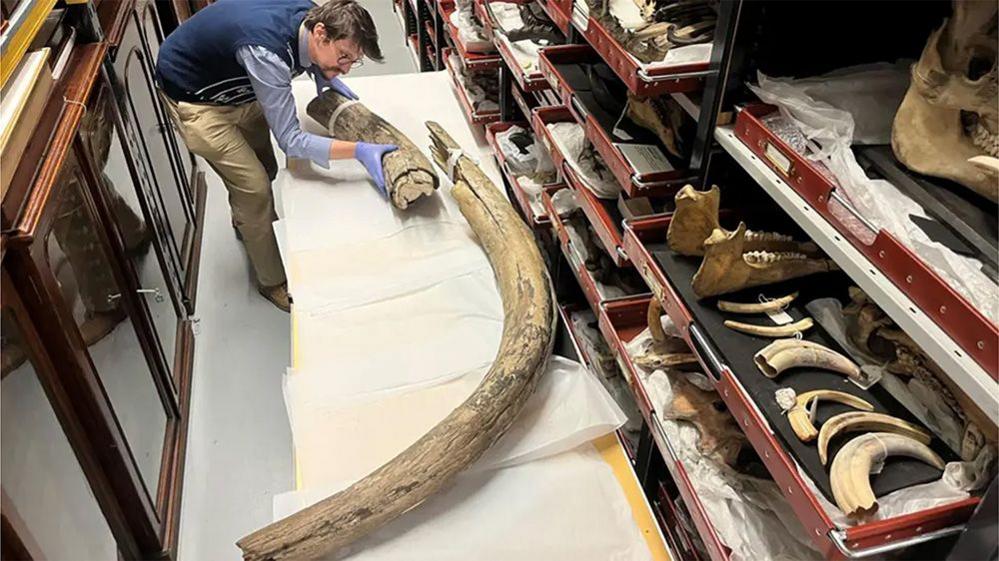How do you clean a mammoth's tooth?

This mega mammoth tusk must have needed a huge toothbrush...
- Published
Experts in Leeds have been brushing one very big, fragile tooth - a mammoth tusk that was found under the River Aire in the 1960s.
They have been uncovering all sorts of different artefacts inside Leeds Discovery Centre, preparing them for local museums.
Mammoths looked similar to elephants, they had a trunk, tusks and a thick layer of hairy fur to help them survive in colder environments.
Different species of mammoth lived in Europe for more than six million years before they eventually became extinct around the world, about 4,000 years ago.
This tusk is evidence that mammoths used to wander around Yorkshire a long time ago, when it was covered in a huge ice sheet.
More like this:
- Published2 April
- Published4 March
- Published14 August
A 'mammoth' effort
As well as the tusk, there are all sorts of interesting archaeological discoveries in the collection including this mammoth's tooth
The tusk itself is around two metres long, and was discovered in an old mine in Leeds in the 1960s.
Clare Brown, who is a curator at Leeds Museums and Galleries, said the huge tusk needed very gentle movements to be cleaned.
"It's quite a responsibility because it is very, very old and it is really quite delicate for something so big and heavy, so you have to make sure you handle it correctly," she said.
Keeping things safe
You can look closely... but don't touch
In museums and art galleries different methods are used to keep artefacts safe.
This is because over time, things can become damaged, especially if they are left out in the open air or near sunlight.
This is why often when you go to museums, things are behind glass to protect them.
Some artefacts also need to be kept at specific temperatures, or need to be dry enough to stay in good condition.
